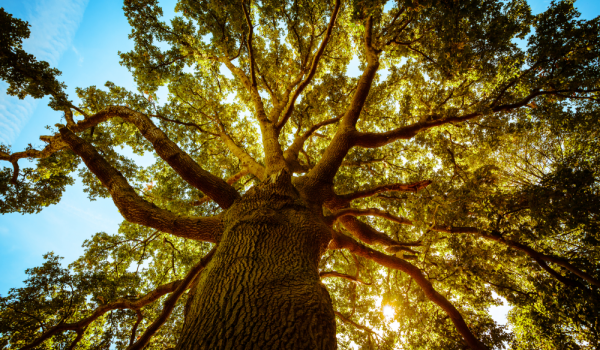All forest types are generally treated with equal standing by the international community, from industrial plantations to restored areas, which contributes to the lack of prioritisation of primary forests including intact forest landscapes. This undermines the conservation of these special forests, subsequently impacting global biodiversity, climate change, livelihoods and ecosystem benefits. While initiatives to address sustainable forest management and restoration of degraded lands are laudable and important, neglecting to recognise and prioritise primary forest and conservation in these landscapes will end up irreparably reducing the full potential of the world’s forested areas.
Primary forests including intact forest landscapes include several forest types and exist throughout the world; however they are primarily found in the Amazon, the boreal area of the northern latitudes, the Congo Basin and in Indonesia, but can be found as fragments in much larger landscapes. These special areas represent about one-third of all remaining forested land, and are irreplaceable and invaluable global assets in terms of biodiversity, carbon sequestration, regulating climate, providing crucial ecological and environmental services, supporting livelihoods and life paths for indigenous peoples, and in aiding human health.
Why primary forests including intact forest landscapes are important:
Biodiversity: These forests are incredibly complex and diverse ecosystems that harbour irreplaceable functional and genetic biodiversity – countless plants and animals, pollinators, dispersers, valuable source seeds, medicines, fungi, bacteria – species too innumerable to list. 70% of terrestrial species reside in forests, and primary forests provide unique habitats for biodiversity. Once these forests are degraded or converted for other land uses, biodiversity loss inevitably ensues.
Carbon sequestration: Old growth trees, dense mature vegetation and rich soils in primary forests including intact forest landscapes are unmatched in terms carbon sequestration and storage (30-70% more than logged or degraded forests). Forests are thought to remove 25% of all human generated emissions of CO2, and primary forests play a substantial role in this extraordinary carbon sink.
Environmental and ecological services: Primary forests including intact forest landscapes are valuable sources of freshwater and regulate hydrological systems within watersheds. They influence local and regional climate and weather, aid in soil retention and temper fire regimes. From a biological perspective, the complex ecosystems and carbon cycles developed within these forests over millennia, sustain life in a profound way that can’t be replicated.
Indigenous peoples’ heritage and livelihoods: More than 400 million people depend on forests for their livelihoods. For where there are data, 40-80% of primary forests including intact forest landscapes may be part of customary lands, however, in many cases, this tenure largely remains unrecognised. There is, nonetheless, a substantial overlap between areas owned by indigenous peoples and primary forests and intact forest landscapes – making them primary stakeholders in forest conservation. Indigenous peoples and local communities are often intricately linked to forests in terms of sustenance and spiritual values, primary and intact forests support the livelihoods and traditional lifestyles of millions, contributing to approximately a third of their income.
The policy case for recognising the value of primary forests including intact forest landscapes
Although 12-22% of primary forests including intact forest landscapes are largely safeguarded in protected areas, the remainder is vulnerable to detrimental exploitation. These remaining areas fall within a policy gap where primary forests are not fully recognised by international bodies and, therefore, it is hard to ensure protection.
Given the substantially greater benefits of primary forests relative to degraded or restored forests, we need to treat them as related but unique in the purview of policy. To fully achieve the goals of national and international efforts such as those set forth in the Paris Agreement Nationally Determined Contributions (NDCs) for carbon sequestration, the biodiversity targets stemming from the Convention on Biological Diversity, and the guiding principles outlined in the Sustainable Development Goals (SDGs), primary forests including intact forest landscapes need to be recognised as a distinct global resource that fundamentally contributes to these global standards, above and beyond other forest categories.
Link to forest landscape restoration
Beyond the lack of a status in policy, the physical conservation of primary forests including intact forest landscapes partially relies on the land uses that surround them. Initiatives aimed at protecting primary forests in isolation from surrounding land uses have had limited success. The negative impacts of certain land uses adjacent to primary create damaging edge effects – with this comes an opportunity to integrate forest landscape restoration efforts. If degraded areas outside of primary forests are restored, a greater buffer is ultimately created around the more beneficial forests within –providing people with timber, fuelwood and non-timber forest products as well as providing habitat for species, allowing corridors for species migrations, retaining soil and moisture, and much more. Forest landscape restoration efforts like the Bonn Challenge are, therefore, crucial for the long-term conservation of the world’s remaining primary and intact forests.
All forests are not alike. Raising the profile of primary forests including intact forest landscapes ultimately supports biodiversity, helps to sustain indigenous peoples, aids in achieving national climate change, biodiversity and other targets, secures environmental services and is imperative to conservation.


